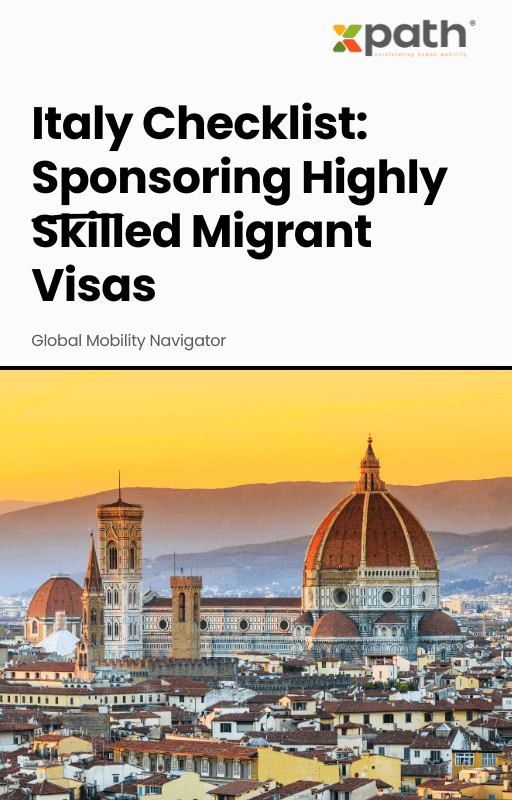Italy Checklist: Sponsoring Highly Skilled Migrant Visas
Grab a copy of a guide to international employee relocation
View E-bookNavigating the world of social security can feel like wandering through a maze, especially when it comes to A1 forms and their crucial role in the EU. So, what exactly is an A1 form, and why should you care? Let’s dive into it.
The A1 form is a vital document used within the EU to prove which country’s social security system covers you. If you’re an employee or self-employed and work across different EU member states, the A1 form ensures you’re only paying into one country’s social security system at a time.
Imagine you’re juggling jobs in different countries—without the A1 form, you might end up paying social security contributions in each country, which is not just confusing but also costly. The A1 form avoids this by clearly establishing which country’s social security system should cover you, helping streamline your contributions and avoid double payments.
Social security coordination within the EU is designed to make cross-border employment easier and fairer. It ensures that individuals don’t lose their social security rights when moving from one EU country to another.
The main goal is to provide protection for workers who move between countries. It’s like having a safety net that travels with you, so no matter where you work within the EU, you have consistent social security coverage.
The A1 form plays a pivotal role in this coordination. It certifies which country’s social security system applies to you and thus which system you should pay into. This prevents overlap and confusion, making sure your contributions are only made to one country’s system.
Without the A1 form, you could end up paying social security contributions in multiple countries, which is not only inefficient but can also create legal and financial complications. The A1 form helps avoid this issue by clearly defining your primary place of social security coverage.
Not everyone needs an A1 form, but if you work across borders or live in one EU country and work in another, it’s crucial.
If you’re an employee working in a country other than your home country, you need an A1 form. This ensures that you’re paying social security in the right place, and you’re covered for things like health care and pensions.
Self-employed workers who operate in multiple EU countries also need an A1 form. This form helps them maintain consistent social security coverage and avoid unnecessary double payments.
Freelancers and contractors who work across borders need to ensure they have an A1 form to avoid complications in their social security contributions.
Complying with A1 form requirements is crucial to avoid legal and financial issues.
Employers must ensure that their employees who work across borders have the correct A1 forms. This involves verifying and keeping records of these forms to ensure compliance.
As an employee, you need to ensure that you obtain and keep your A1 form up-to-date. It’s also your responsibility to inform your employer if there are any changes in your work situation that might affect your A1 form.
Maintaining accurate records and documentation of your A1 form is essential. This can help in case of audits or any issues with social security contributions.
Ignoring A1 form requirements can have serious consequences.
Non-compliance can lead to significant financial penalties and fines. It’s like paying a heavy toll for not following the rules, and it’s one that can be easily avoided by ensuring you have the right documentation.
Beyond financial penalties, non-compliance can also result in legal troubles. This can affect your future rights and benefits within the EU.
Failing to comply with A1 form requirements can impact your future social security benefits. Ensuring compliance helps protect your entitlements and avoids future issues.
Navigating A1 forms can be easier with a few helpful tips.
If you’re unsure about any part of the process, seeking professional help from a social security advisor or consultant can make things smoother.
Social security regulations can change, so it’s important to stay informed about any updates that might affect your A1 form and contributions.
Navigating A1 forms and ensuring compliance with social security coordination in the EU might seem complex, but it’s crucial for avoiding legal and financial pitfalls. By understanding the role of the A1 form, following the application process carefully, and staying compliant, you can manage your social security contributions effectively across borders. Don’t let the intricacies of cross-border work deter you—armed with the right knowledge and tools, you can successfully handle your social security needs.

Italy Checklist: Sponsoring Highly Skilled Migrant Visas
Grab a copy of a guide to international employee relocation
View E-book